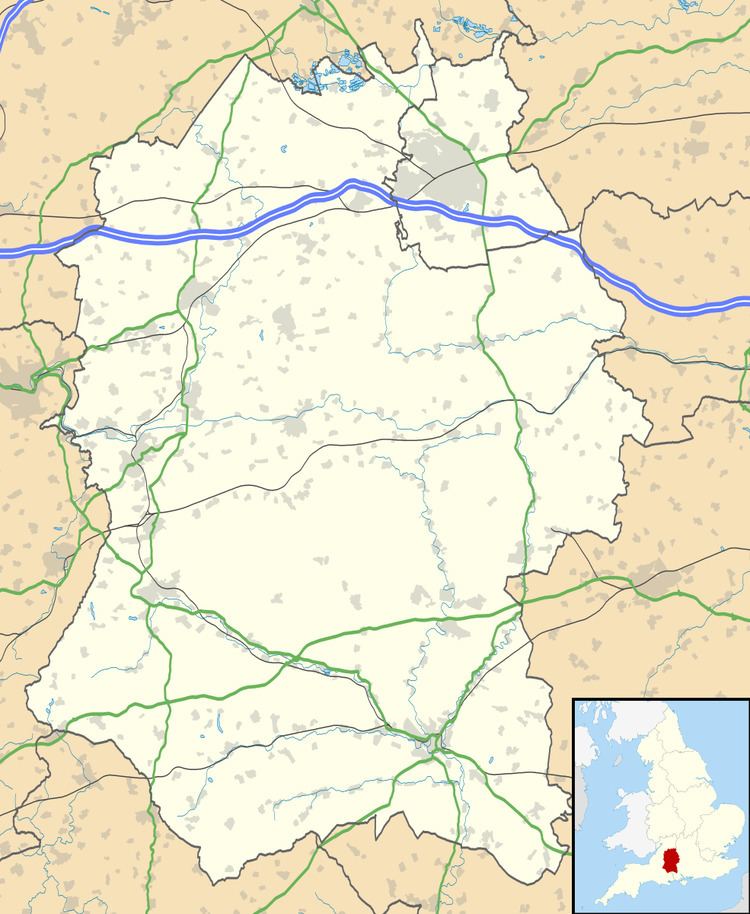OS grid reference ST988324 Sovereign state United Kingdom Local time Tuesday 8:05 AM | Unitary authority Postcode district SP3 | |
 | ||
Weather 4°C, Wind SE at 8 km/h, 100% Humidity | ||
Teffont Magna, also sometimes called Upper Teffont, is a small village in the south of Wiltshire, England.
Contents
Map of Teffont Magna, Salisbury, UK
For most of its history Teffont Magna was a chapelry of neighbouring Dinton, and in 1934 it was combined with the village of Teffont Evias, just to the south, to form a united Teffont.
Location
Teffont Magna lies six miles (10 km) east of Hindon, Wiltshire. The River Nadder rises near the village.
Position: grid reference ST988324
History
The ancient parish of Teffont Magna formed part of the Warminster hundred of Wiltshire.
According to Wilson's Imperial Gazetteer of England and Wales (1870–1872):
TEFFONT-MAGNA, a parish in Tisbury district, Wilts; 1¾ mile NW of Dinton r. station. Post town, Teffont, under Salisbury. Acres, 1,440. Rated property, £1,723. Pop., 292. Houses, 63. The property is divided among a few. The living is a p. curacy, annexed to Dinton. The church is tolerable.
A detailed history of the parish was published in 1965 by the Wiltshire Victoria County History (Volume VIII).
An etching of Teffont Magna by John Piper was released in an edition of seventy prints in 1988.
Church
The 13th century Church of England church was for much of its existence a chapel of ease of Dinton, and thus escaped Victorian restoration and is substantially original. The church even contains a 13th-century bell, one of the oldest in England, although no longer in use. In 1965 no dedication was recorded for the church, and in that year it was named St Edward's, for Edward the Martyr, king and saint. A pre-Conquest cross shaft survives. The parish registers are in the Wiltshire and Swindon History Centre for the following dates: Christenings 1852–1991, Marriages 1852–1992. Before that, the records are with those of Dinton.
Owners
The 15th-century cartulary of Shaftesbury Abbey includes two charters which refer to land in "Teffont". The first is dated 860, and in it Æthelbald grants fourteen cassati (hides) to a thegn named Osmund. In the second, of 964, King Edgar granted five cassati to the thegn Sigestan. As Shaftesbury Abbey owned the manor of Teffont Magna by the time of the Norman Conquest, the charters may refer to parts of it. There is no mention of Teffont Magna in the Domesday Book, where it may be included under Dinton, another of the Abbey's manors. After the Dissolution of the Monasteries, Teffont Magna was acquired with Dinton by William Herbert, who later became Earl of Pembroke. It remained with his successors as Earls of Pembroke until 1919, when it was sold to Lord Bledisloe. In 1950 his younger son, Charles Hiley Bathurst, sold the estate to John Jacob Astor, who a year later broke the estate up by selling it in several lots.
Governance
The present village of Teffont Magna is now part of the parish of Teffont, which has a parish council and is in the area of the Wiltshire Council unitary authority, which is responsible for almost all significant local government functions. It forms part of the Salisbury parliamentary constituency, and the serving Member of Parliament is John Glen.
Notable people
On 25 October 1854, in the Crimean War, Charles Wiltshire Short of Teffont Magna took part in the Charge of the Light Brigade.
In 1856 Harry Fidler was born here to a local farmer, but he took to painting and returned to have a studio here at an old Methodist Church.
In the 1930s, the poet Siegfried Sassoon rented and lived at Fitz House, Teffont Magna. He went to look at it after a friend had written to him of its flagstones, lavender, mullioned windows, orchard and stream.
The explorer Bill Kennedy Shaw also lived in the village in the 1930s and 1940s, at his parents' house, King's Orchard.
